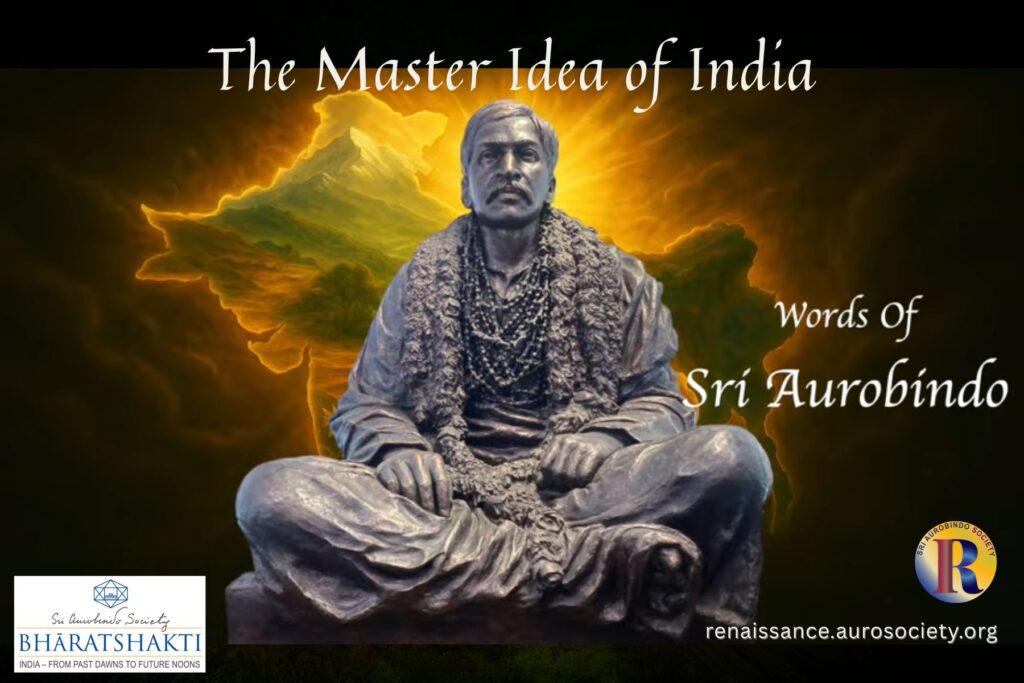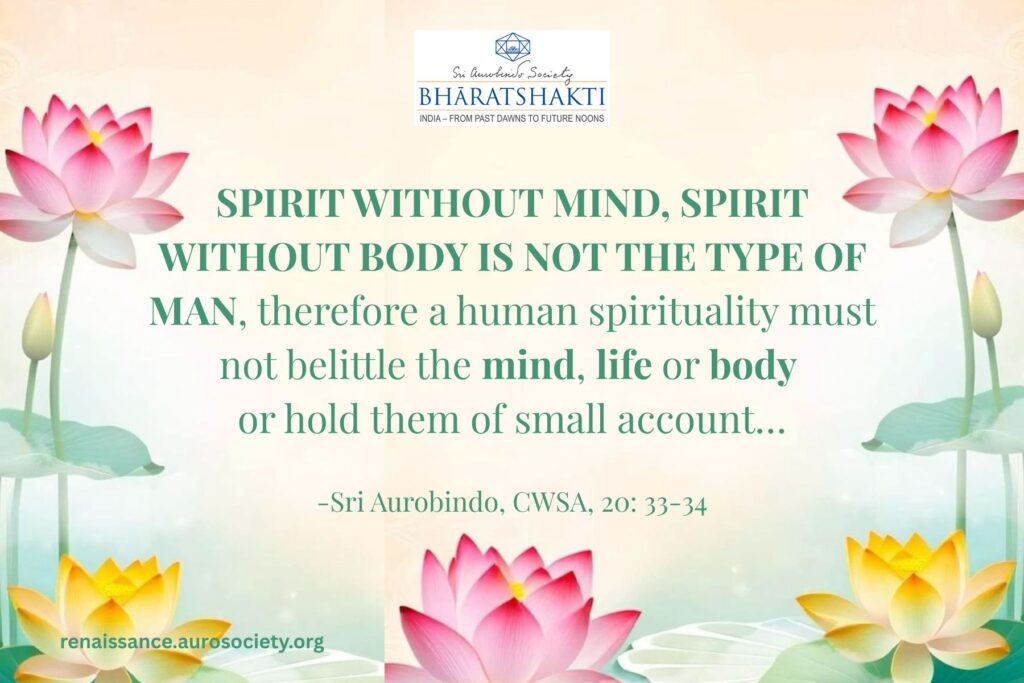Editor’s Note: The secular ideology of the West has made significant contribution toward progress in Western nations. But as the author argues, it is not in alignment with the innate spirit and swadharma of India. He reminds us of the necessity to convert the great and unbroken spiritual heritage of our nation into a living force of inspiration for every activity of our individual and collective life. This will lead to a lasting regeneration of India.

There is almost a consensus among modern intelligentsia that secularism, as it was conceived and practiced in the West, is the best ideology for democratic governance. This secular ideology has its positive features and made important contribution for the progress of western nations. But is this the right political ideology for India with her deep rooted spiritual heritage at the very origin of the nation?
The Foundations of Indian Civilisation
To answer this question we have to go back to some of the unique features of ancient Indian spirituality. It is that which gave birth to the Indian civilisation and what is called as “Hinduism.”
In India, whenever someone talks about the need for moulding the nation according to the great spiritual vision of the founders and seers of Indian civilisation, the secular pundits and politicians raise a big hue and cry, calling it as “Communalism”, “majoritarianism” or “Hindu cultural nationalism.” They argue that such an approach will destroy the “secular pluralism” of Indian society and lead to the suppression and oppression of those who belong to the minority religions.
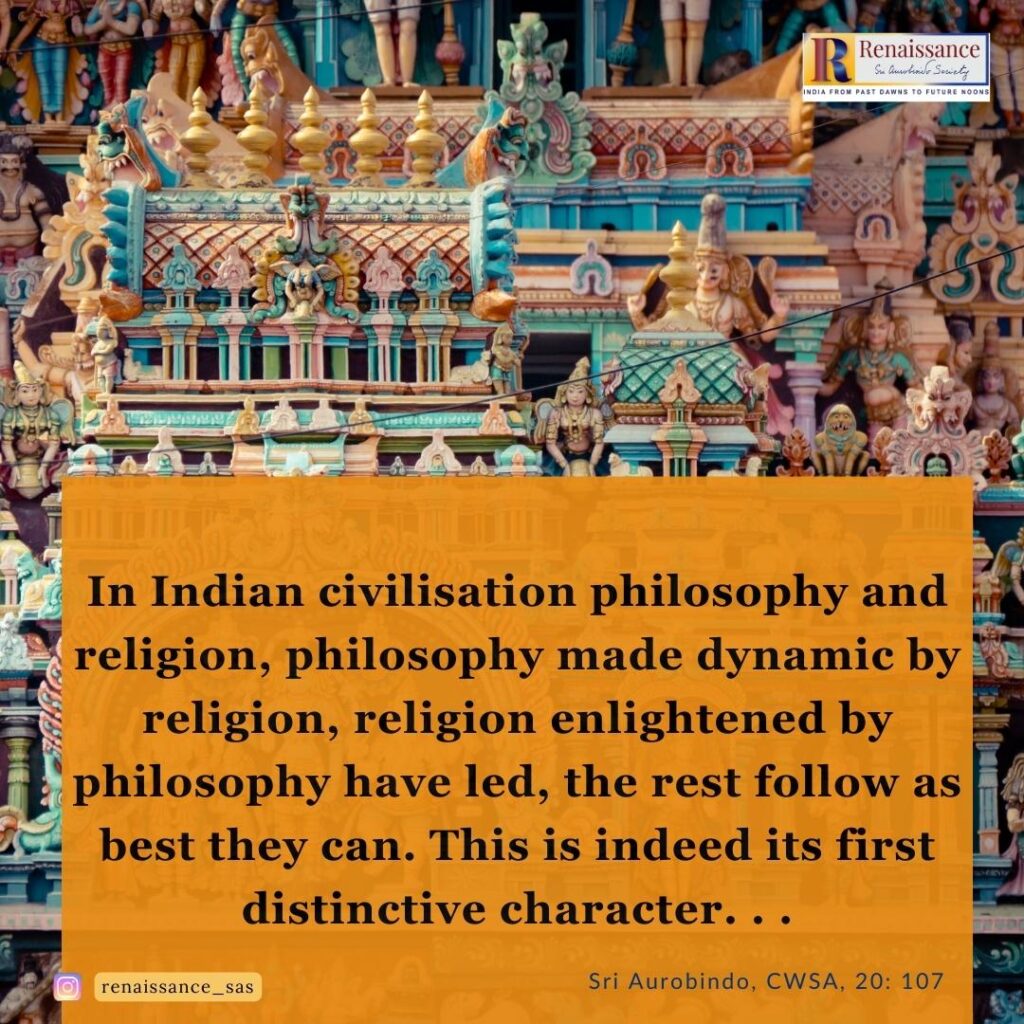
Lessons from Indian History
The ancient Indian Kings, especially the great emperors such as Chandragupta, Vikramaditya, Harshvardhana, Krishnadevaraya, and Asoka, had made a conscious attempt to build a society, polity and culture based on the moral and spiritual values of Indian seers and sages. At the same time they displayed unparalleled tolerance to minority religious communities such as the Buddhist, Jains, Sikhs, and Zoroastrians.
In many of these kingdoms, human society as a whole reached a balanced development. Economic prosperity, efficient organisation, intellectual vigour, cultural creativity, ethical sensitivity, religious efflorescence and spiritual seeking went together harmoniously without any conflict. For example, a team of American historians makes the following observations on the empire of Vikramaditya:
Fa hsien who had no reason to bestow unmerited praise (he does not even mention the name of the great king Vikramaditya) described the government as just and beneficent. The roads he indicated, were well maintained, brigandage was rare, taxes were relatively light and capital punishment was unknown. He testified to a generally high level of prosperity, social contentment and intellectual vitality when the nations of Western Europe were sinking into semi-barbarism.
~ E.M. Burns and others World Civilizations, Vol.1, p. 305
Hinduism, Unlike Other World-religions
Let us note, however, that what is called as “Hinduism” is not like other organised world-religions. Hinduism is not a religion founded by a single prophet with a single inviolable dogma. It is a congerie of religions, philosophies and practices held together by systems of shared values and ideals. In its origin, Hinduism emerged out of a collective spiritual quest of many generations of seers and sages.
We speak often of the Hindu religion, of the Sanatana Dharma, but few of us really know what that religion is. Other religions are preponderatingly religions of faith and profession, but the Sanatana Dharma is life itself; it is a thing that has not so much to be believed as lived.
~ Sri Aurobindo, CWSA, Vol. 8, p. 6
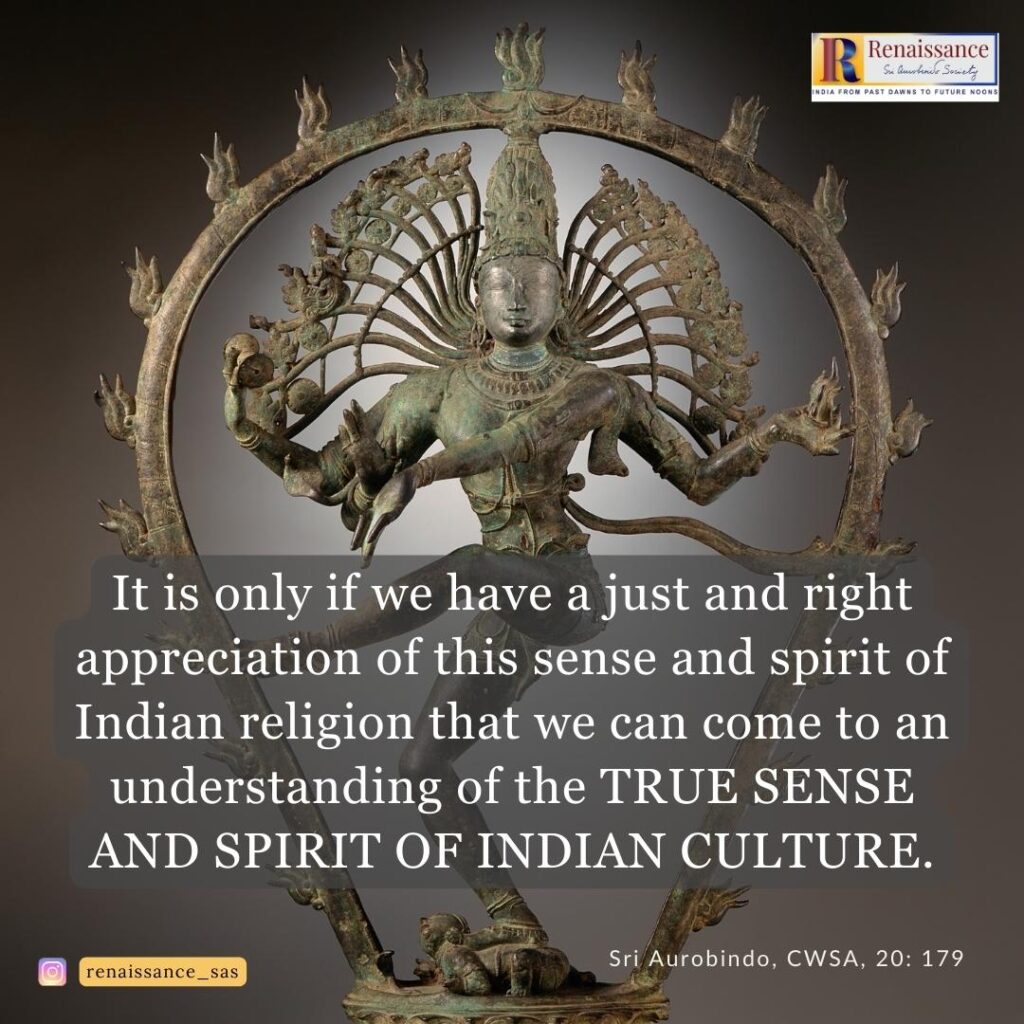
What Makes Indian Spirituality Tremendously Relevant
There are four unique features of Indian spirituality and its discoveries, which make them tremendously relevant not only for the future of India but also for humanity as a whole.
- First, they are not sectarian or dogmatic but something universal, not speculative or philosophical, but experiential and practical.
They point towards not to a “One God” distinct or opposed to other gods, but to a Oneness of Being, Life and Consciousness, where we can feel our unity with all humanity, earth and the entire creation as part of our own self, not merely as an idea or a feeling, but as an inner experience or realisation, as concretely as we feel our body as our own self.
And the most important part of this discovery is that it comes with a practical dimension in the form of the Science of Yoga, which provides innumerable paths, disciplines and practices to arrive at this experience or realisation of unity.
- Second, when put into practice, individually and collectively, these Indian discoveries can lead to inner transformation of human consciousness.
These changes and transformations in the consciousness when expressed in the outer life can bring about a transformation of human life.
Also read by the same author:
Is There Something Like Indian-ness?
- Third, they are scientific, experimental, which means they can be rediscovered, and re-experienced.
They are in fact rediscovered by a subsequent generation of seers which continues up to this day, in the experiences and realisations of modern Indian seers and saints. Sri Aurobindo, Ramakrishna Paramhansa, Ramana Maharishi, Mata Amritanandamayi, and Ma Anandamayi are some recent exmples. Many western thinkers are also now beginning to recognize this. For example, Ken Wilber, a well-known exponent of transpersonal psychology, states:
These eastern disciplines such as Vedantha or Zen are not theories, philosophies, psychologies or religion,—rather they are primarily a set of experiments in the strictly scientific sense – to refuse to examine the result of such a scientific experiment because one dislikes the data so obtained is in itself a most unscientific gesture.
~ Ken Wilber, Spectrum of Consciousness, p. 25
Fourth, Indian spirituality fostered a rich diversity in thought, art and literature and encouraged free, scientific, philosophical and spiritual enquiry. The spiritual discoveries of Indian seer, sages and yogis expressed itself at the intellectual level in the form of six systems of philosophy which includes logic, science, cosmology and yoga.
- Free enquiry, expression and experimentation and vigorous debate are part of the culture of Indian spirituality.
Religions and philosophies like Buddhism, Jainism and the atheistic cult of Carvaka questioned or rejected the dominant Vedic paradigm. Yet they were given full freedom to propagate their ideas, practice their cults and build their institutions. All the systems of philosophy intensely debated with each other in the cultural life.
To attain that higher consciousness beyond the human mind, Indian yogis have attempted, tested and experimented with hundreds of paths and methods. This includes even some radical innovations like the left-hand-path of the Tantra.
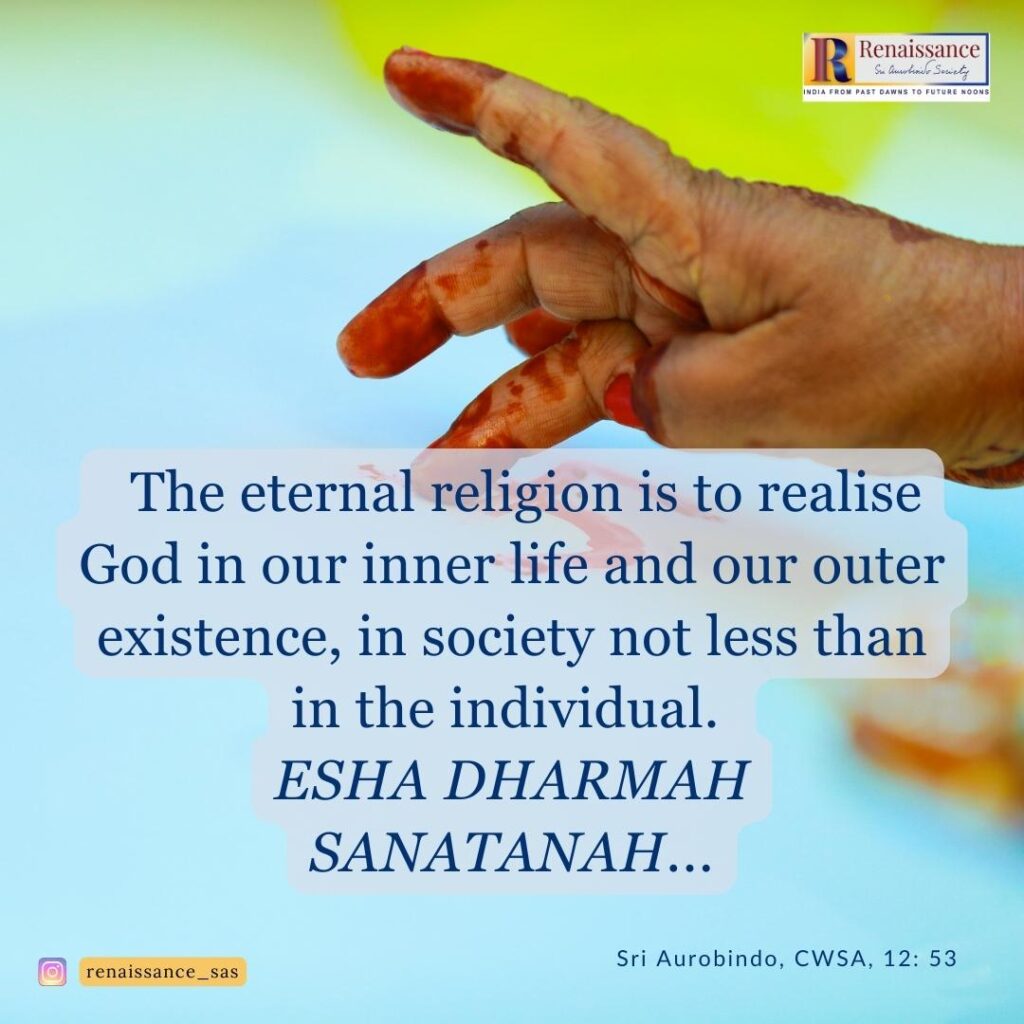
Western Secularism and Indian Spirituality
This brings us to some important questions concerning the concept of secularism. In Europe, the philosophy of secularism brought freedom of thought to the social and religious life. Before the advent of the secular ideal, there was no religious or cultural liberty in Europe. There was only the imposition of a single religion and its beliefs on the whole society by the Church.
The secular thought brought the idea of religious freedom which means the freedom for each individual to practice the religion of his choice. Here we must understand clearly the meaning of the word “secularism” as understood and practiced with potent creative force in the West. And then contrast that to the totally uncreative way in which modern politicians in contemporary India have misunderstood and misapplied it.
Secularism, as it is understood by early European thinkers who conceived the idea, is not atheism or anti-religious. It is about the neutrality of the State to the religious beliefs of the people. It guarantees freedom for each individual to pursue the religion of his choice and equal respect for all religions.
Another important aspect of Western secularism is that ideally it must keep religion apart from politics. In other words, religion and politics are to be in two separate compartments and not to be mixed with each other.
Let us now examine these tenets of secularism from a higher spiritual perspective.
If religion means dogmas of organised religion and the religious beliefs of people then neutrality of the state to religion and keeping religion and politics separate are admirable principles. But is it necessary for the state to be neutral to a universal and uplifting spiritual vision such as that of ancient and modern Indian seers, which can elevate human life to a higher dimension of consciousness and life?
What is wrong if a state actively and consciously sponsors such a vision and strives to mould the nation according to this vision? Especially when this vision is the very source and foundation of the Nation, rooted in history, culture, civilisation, consciousness and destiny of the Nation?
Indian civilisation was created and built on the foundations of such a spiritual vision. Spirituality is the very soul and genius of India.
In the western civilisation spirituality is an exotic flower which blooms occasionally in a secular soil. But in India spirituality is the very soil and ground of her civilisation.
No Distinction between Secular and Spiritual Life
The spiritual vision which gave birth to the Indian civilisation makes no distinction between the secular and spiritual life. It saw with an inner gaze that there is a deeper spiritual truth behind every human activity—business and politics, art and science, society and culture. One of the aims of this spiritual paradigm of life is to awaken to this deeper truth of the Spirit. This living truth must govern every activity of our life.
We, in India can progress better and faster, if we draw our inspiration from our spiritual heritage. This we must do, openly and unhesitatingly, in every activity of our life; private and public, secular and religious,
We have examples to support this. The great Indian scientist, Jagdish Chandra Bose, who demonstrated the presence of life in the stone and the plant, drew his inspiration from the Vedantic and Tantric philosophy. Our mathematical genius, Srinivasa Ramanujam, said that he received his equations in a dream from a Goddess, his chosen deity.
Nobel laureates such as Erwin Schrödinger and Heisenberg found a deeper meaning in the discoveries of new physics in the light of Indian insights on the unity of all life. Albert Einstein is reported to have shared with an Indian scientist about his inspiration from the Bhagavad Gita. Charles H. Townes, a Nobel laureate in physics and the inventor of Laser said:
Understanding the universe, I think is somewhat parallel to our understanding of our relations with the creator. In this search for truth, it will be certainly beneficial to incorporate the spiritual principles in their scientific works.
~ Charles H. Townes, Interview, SAVIJNANA, A journal of Bhakti Vedanta Institute
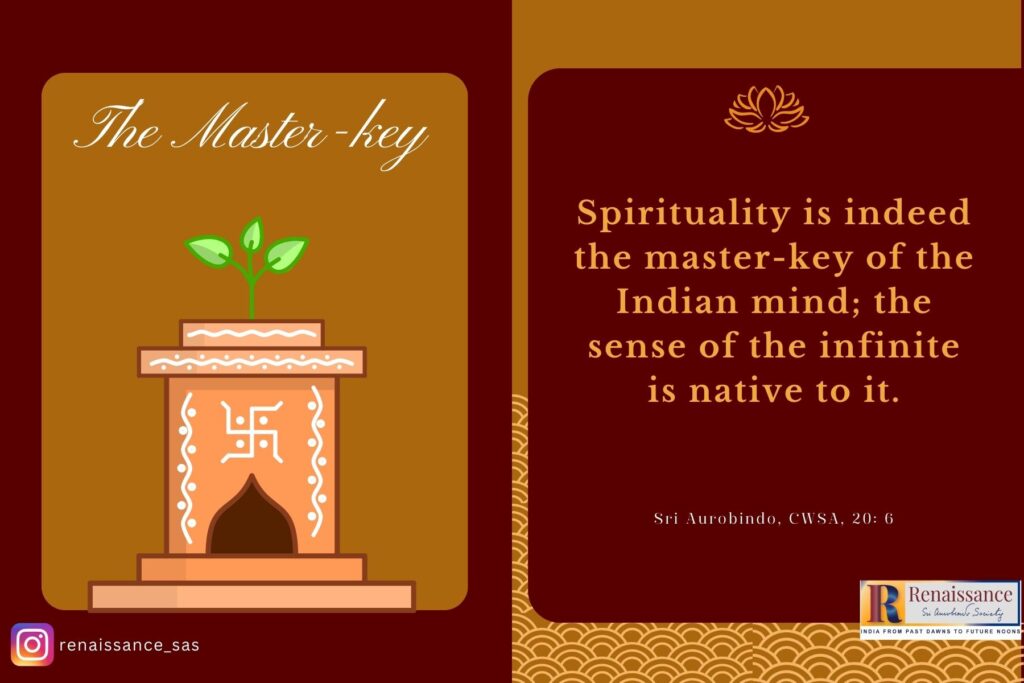
India’s Spiritual Treasure
We have in India a spiritual treasure. It gives humanity a deeper and better understanding of the truths, laws and principles of life, Nature and the Universe, and a great science which can transform our life. There is a great need to convert this great and unbroken spiritual heritage into a living force of inspiration for every activity of our individual and collective life. This will lead to a lasting regeneration of our nation.
This will help Indian mind look at the modern problems of mankind in the light of deep spiritual truths. It is this which will make India into a true spiritual guru of the world, leading humanity and earth towards their spiritual destiny.
India’s Svadharma
The western concept of secularism, because of its indifference or neutrality to spirituality, is not conducive to the Indian svadharma. It will not be of much help in bringing forward the unique spiritual potentialities and genius of India. For India’s regeneration, we have to build a new system of polity, government, management, education and culture based on the spiritual vision and values of our civilisation.
A government which seeks to build India on the foundations of her innate spiritual genius must not be neutral to religion and spirituality. It must actively and consciously strive to awaken the inherent spirituality in the consciousness of the nation and its people. It must do so through an appropriate system of education aimed for mental, moral and spiritual development.
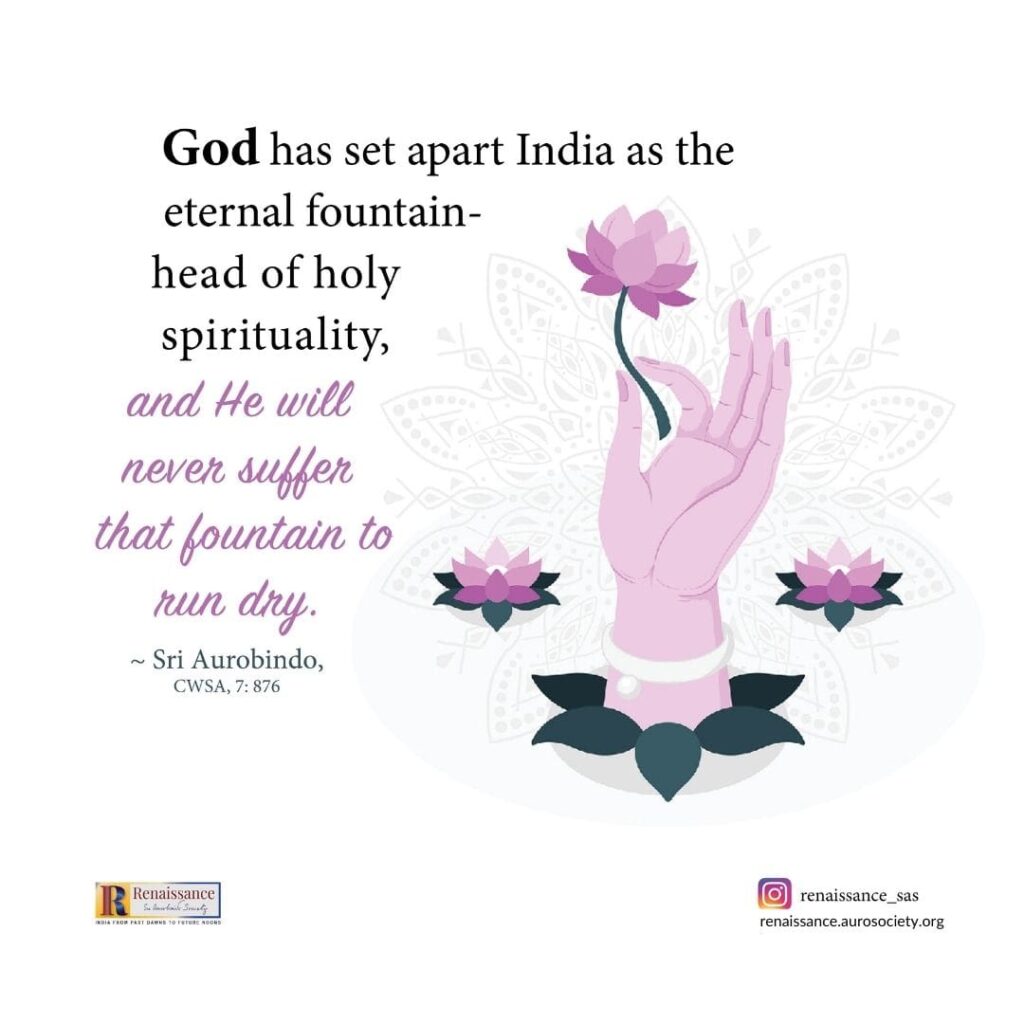
An important part of this education is to awaken the Indian masses to some deeper truths.
This includes both the essence of religion as well as the true meaning of spirituality. Indian curriculum must include the following elements:
- The true meaning of religion and the difference between traditional or organised religion and the true spirituality
- The main teachings of all major religions
- Teachings of the great scriptures of Indian religion like Upanishads, Bhagavad Gita and Dhammapada
- Teachings of modern Indian spiritual masters and their new contribution
- Principles and Practices of Yoga
The most important is the fifth point, Yoga.
Yoga refers to the principles and practices of the inner disciplines. This is what can lead to the moral, psychological and spiritual evolution of the individual. It helps the individual to reunite his soul with the inner spiritual source of his own being and the world. This, in fact, is the highest goal of all religion.
. . . it is to make the yoga the ideal of human life that India rises today; by the yoga she will get the strength to realise her freedom, unity and greatness, by the yoga she will keep the strength to preserve it.
~ Sri Aurobindo, CWSA, Vol. 8, p .24
This practical dimension of Yoga is essential in Indian education. Mere theoretical or conceptual understanding of religion or spirituality may not lead to any great spiritual awakening.
This doesn’t mean intellectual understanding is unimportant. For a national awakening, changing the thought-process of people through the right and the true idea is very important. But for a lasting spiritual awakening we must also provide the discipline for living the idea in life and action. We must demonstrate how to convert it into an inner realisation in consciousness.

You may also enjoy reading:
An Imagined Dialogue between Chhatrapati Shivaji and Jaisingh
~ Design: Beloo Mehra & Ramajayam

